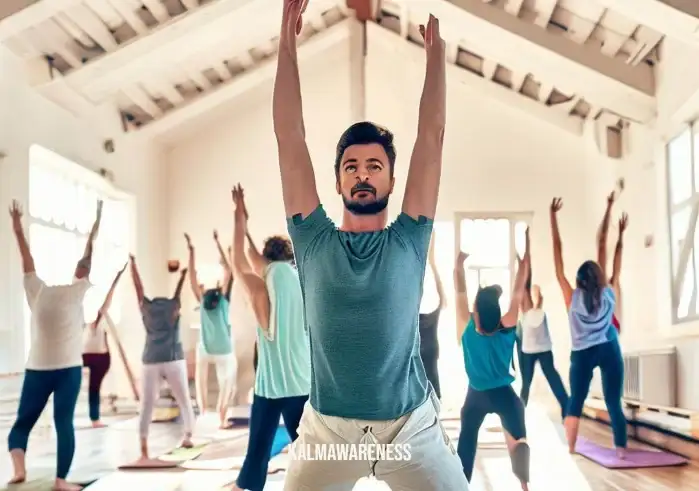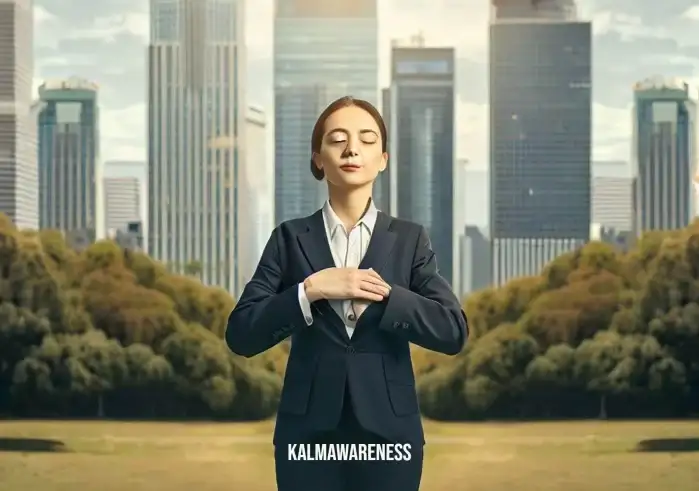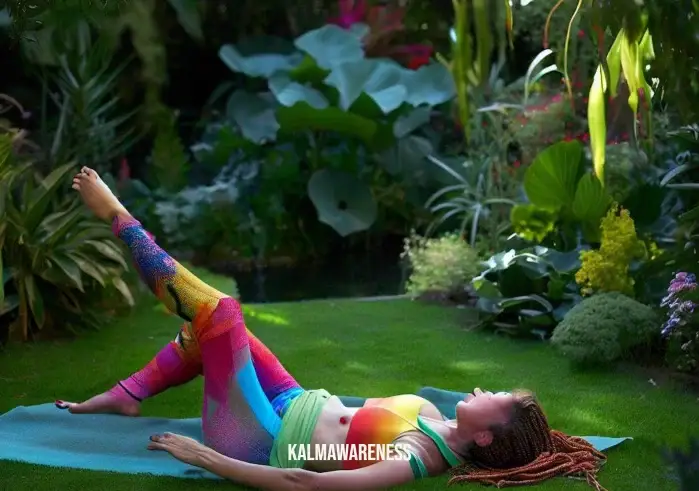Unraveling the Mystique: The Rag Doll Pose in Yoga
Yoga, a collection of practices dating back thousands of years, serves as a vast reservoir of poses that promote mental tranquility, physical fitness, and spiritual growth. Among them is the intriguing “Rag Doll Pose,” or in Sanskrit, “Uttanasana,” a fundamental pose with immense benefits. The rag doll pose yoga is a favorite amongst yoga practitioners, and in this article, we’ll delve into its intricacies, significance, and how-to.
Table of the Pose
| Description | Explanation |
|---|---|
| Pose Name | Rag Doll Pose |
| Original Name | Uttanasana |
| Difficulty Level | Beginner |
| Pose Category | Standing Forward Bend |
| Exercise Duration | Beginners: 30 seconds – 1 minute, Advanced: Up to 5 minutes |
Understanding the Rag Doll Pose
The Rag Doll Pose Yoga – Uttanasana
The Rag Doll Pose, or Uttanasana (oot-tan-AHS-uh-nuh), originates from the Sanskrit terms ‘Ut’, meaning ‘intensity’ and the term ‘tan’, meaning ‘to stretch’. As a result, this pose is also known as the Intense Stretch Pose.
Significance of the Rag Doll Pose
This pose mirrors the action of a rag doll as it dangles limply with gravity. As a standing forward bend pose, Uttanasana works in harmony with gravity, promoting relaxation and release, whilst providing an intense stretch for the hamstrings and the entire posterior chain of the body.
Unpacking the Benefits
Practicing the Rag Doll Pose offers multiple benefits to both your body and mind. For the body, this pose stretches the muscles at the back of the body, particularly the hamstrings and calves, and decompresses the spine, releasing any tension residing there. Additionally, this pose can improve digestion and stimulate the liver and kidneys.
For the mind, this pose encourages a calm and composed mental state. By reducing anxiety and relieving symptoms of mild depression, it aids in stress management, fosters mental relaxation, and promotes overall wellbeing.
How to Practice the Rag Doll Pose
As we transition into exploring the execution of the Rag Doll Pose, remember that it’s not about touching your toes, but what you learn on the way down. Yoga is a journey, not a destination.
The following is a step-by-step guide designed for beginners and advanced practitioners alike. Remember, the beauty of yoga lies in its flexibility – pun intended – to be modified to suit individual needs and abilities.
Step 1: Starting Position Begin by standing tall with your feet hip-width apart. This is known as the Mountain Pose or Tadasana. Keep your arms relaxed by your sides.
Join us in the next part of the article to delve deeper into the steps of mastering this pose and to uncover some exciting variations and modifications of the Rag Doll Pose that can further enhance your yoga practice. We’ll also explore the precautions and contraindications related to the pose. Stay connected and expand your yoga horizons with us.

Exploring Deeper: The Many Facets of the Rag Doll Pose Yoga
In the first part of our exploration of the Rag Doll Pose Yoga, we acquainted ourselves with its origins, significance, and basic execution. Now, let’s venture into the myriad benefits this pose offers, understand its contraindications, and explore variations suitable for different skill levels.
Diving into the Benefits of Rag Doll Pose Yoga
The Rag Doll Pose Yoga, with its unique combination of a deep stretch and tranquility, serves as a cornucopia of benefits that extend beyond the yoga mat. It caters to our body, mind, and spirit, offering a holistic approach to wellbeing.
Physical Benefits
- Improved Digestion: By compressing the abdominal organs, this pose aids in enhancing digestion and elimination.
- Better Respiratory Function: It expands the chest and lungs, improving respiration.
- Increased Flexibility: Regular practice improves the flexibility of the spine and hip joints, and it also lengthens the hamstrings.
- Strengthens the Knees and Thighs: While being a stretch for the posterior chain, it also works on the quadriceps, promoting overall leg strength.
Mental Benefits
- Stress Relief: The forward bend encourages a sense of surrender, helping in reducing stress and anxiety.
- Energizes the Mind: By increasing blood flow to the brain, it helps in alleviating fatigue and rejuvenating the mind.
- Boosts Mood: It’s known to alleviate symptoms of mild depression, promoting a positive outlook.
Precautions and Contraindications
While yoga is generally safe, it’s essential to listen to your body’s cues and be aware of when a pose might not be suitable for you. The Rag Doll Pose Yoga is contraindicated for individuals:
- With severe back conditions, like slipped disc or sciatica.
- Suffering from high blood pressure or heart conditions.
- Experiencing vertigo or balance issues.
- Currently in the late stages of pregnancy.
Remember, if you have any medical condition, it’s crucial to consult your healthcare provider or a qualified yoga instructor before starting or modifying your yoga routine.
Variations and Modifications
Whether you’re a novice stepping onto the mat for the first time or an advanced yogi seeking to deepen your practice, there’s a version of the Rag Doll Pose Yoga that’s just right for you.
For Beginners
If you’re having difficulty reaching the floor, use a yoga block. Place it in front of you and rest your hands on it, allowing your upper body to surrender to gravity.
For Intermediate Yogis
Try the clasped elbow variation. Instead of letting your arms hang freely, bend your elbows and hold onto each elbow with the opposite hand. This can intensify the stretch in your shoulders and upper back.
For Advanced Practitioners
You can incorporate a chest expansion. From the basic pose, interlace your fingers at the back, stretch your hands up and let them fall over your head towards the ground. This adds an intense shoulder stretch and chest opening to the basic pose.
Unfolding the Rag Doll Pose Yoga reveals a world of potential benefits and variations, ensuring that it remains a versatile addition to your yoga routine, regardless of your skill level.
In the concluding part of our comprehensive guide, we’ll explore the therapeutic applications of this pose, and delve into some fascinating insights from yoga philosophy. Join us in the next chapter to further deepen your understanding of the Rag Doll Pose Yoga.

Delving into the Legacy: The Time-Honored Journey of the Rag Doll Pose Yoga
As we journey further into our comprehensive guide on the Rag Doll Pose Yoga, we encounter the enduring legacy of this pose. This chapter unfurls the rich history of the pose, its spiritual significance, and how to maximize its benefits. We also look at common mistakes to avoid and modifications for those with limitations. Finally, we explore poses that beautifully complement the Rag Doll Pose.
History and Legacy of the Rag Doll Pose
Uttanasana, or the Rag Doll Pose, traces its roots back to the ancient practice of Hatha Yoga, a tradition that has been passed down through millennia. Historically, it was used by yogis to prepare for deeper practices like meditation by fostering a sense of introspection and calming the mind. It also acted as a transitional pose between standing and seated sequences, providing balance and harmony within the practice.
The Spiritual Significance of the Rag Doll Pose
In the spiritual realm of yoga, the Rag Doll Pose is more than just a physical exercise. It is symbolic of surrendering one’s ego. The forward bending action encourages the idea of bowing down in humility, letting go of rigid thoughts and welcoming openness and acceptance.
This pose also activates the Muladhara (Root) Chakra, which according to yogic philosophy, is the seat of grounding energies. It’s believed to nurture a sense of stability, patience, and resilience in the practitioner.
Maximizing the Rag Doll Pose: Tips and Common Mistakes to Avoid
Practicing the Rag Doll Pose Yoga with correct alignment and awareness can help you reap its maximum benefits. Here are some tips to enhance your practice and some common mistakes to be mindful of:
- Breathe Deeply: Engage in long, deep breaths throughout the pose to aid relaxation and improve the stretch.
- Maintain Alignment: Ensure that your hips are aligned over your ankles to distribute your weight evenly.
- Don’t Lock Your Knees: Avoid hyperextending your knees as it can lead to undue pressure and potential injury.
- Avoid Straining Your Neck: Let your head hang freely without any tension.
Modifications for Different Needs
Yoga is all about adapting the practice to fit the individual’s needs and capabilities. If you have injuries or limited flexibility, you can:
- Use a prop: Use a yoga block or folded blanket to rest your hands if you can’t reach the floor.
- Bend your knees: If the stretch in your hamstrings is too intense, feel free to bend your knees.
- Adjust the pose: If you have lower back issues, consider practicing Ardha Uttanasana (Half Forward Bend) instead.
Complementary Poses
The Rag Doll Pose Yoga works synergistically with several other poses:
- Mountain Pose (Tadasana): It’s the foundation for all standing poses and a great pose to transition into the Rag Doll Pose.
- Downward Facing Dog (Adho Mukha Svanasana): This pose complements the stretch of the hamstrings provided by Uttanasana.
- Child’s Pose (Balasana): After an intense forward bend, this restorative pose can provide a gentle counter-stretch to the spine.
Yoga is a rich tapestry interwoven with poses like the Rag Doll Pose, each thread carrying its unique legacy, significance, and potential for transformation. As we conclude our journey exploring the Rag Doll Pose, remember that every pose is an opportunity for self-discovery and personal growth. May your practice be fulfilling, enlightening, and grounded in safety and joy.




